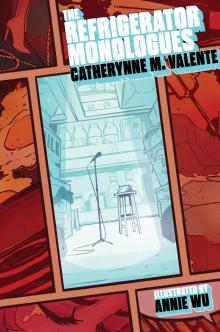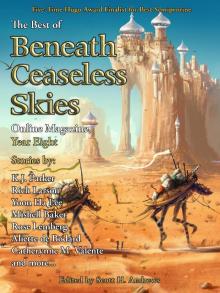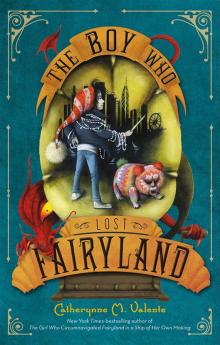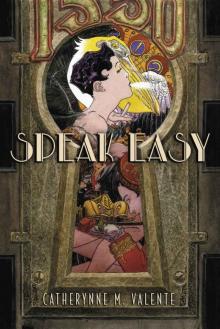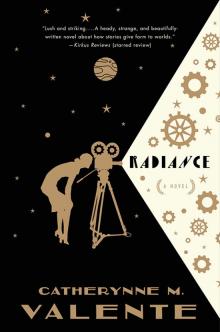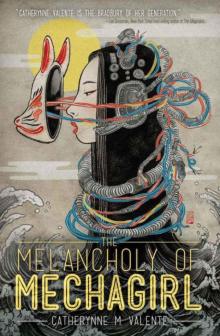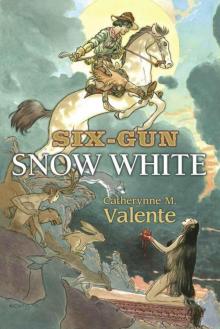


Seafurrers, Page 9
Philippa Sandall
But Locke is not an ideal candidate to be the pinup boy for a pilgrim’s progress. The following year, wearing a very different hat, he set sail from London for Guinea as captain of a trading voyage that brought home with them, according to Hakluyt’s account, “certaine blacke slaves, whereof some were tall and strong men, and could wel agree with our meates and drinkes.” The plan was to teach the slaves English so they could act as interpreters on future trading voyages to Guinea. We don’t know if those slaves ever saw their homes again, but after that numerous charters were granted to British merchants to establish settlements on the West Coast of Africa to supply ivory, gold, pepper, dyewood, and indigo. These weren’t the only commodities they traded. Slaves proved the most profitable venture for Elizabethan sea dogs like John Hawkins, Francis Drake, and the countless slave traders who followed.
Thus began Britain’s role in the infamous Atlantic triangular slave trade, a three-legged journey for British slave traders. They took:
• manufactured trade goods—cloth, guns, ammunition, beads, alcohol—to West Africa to barter for slaves
• slaves (men, women, and children captured by slave traders or bought from African chiefs) across the Atlantic (in the stage of trade known as the Middle Passage) to sell in the West Indies and North American colonies
• sugar, rum, molasses, tobacco, and hemp back to Britain.
INCIDENT 24: Designated Diver
The Journal of a Voyage to Lisbon
Henry Fielding, Esq, 1755
“
Thursday, July 11. . . . A most tragical incident fell out this day at sea. While the ship was under sail, but making, as will appear, no great way, a kitten, one of four of the feline inhabitants of the cabin, fell from the window into the water: an alarm was immediately given to the captain, who was then upon deck, and received it with the utmost concern and many bitter oaths. He immediately gave orders to the steersman in favour of the poor thing, as he called it; the sails were instantly slackened, and all hands, as the phrase is, employed to recover the poor animal. I was, I own, extremely surprised at all this; less, indeed, at the captain’s extreme tenderness, than at his conceiving any possibility of success; for if puss had had nine thousand, instead of nine lives, I concluded they had been all lost. The boatswain, however, had more sanguine hopes; for, having stript himself of his jacket, breeches, and shirt, he leapt boldly into the water, and, to my great astonishment, in a few minutes, returned to the ship, bearing the motionless animal in his mouth. Nor was this, I observed, a matter of such great difficulty as it appeared to my ignorance, and possibly may seem to that of my fresh-water reader: the kitten was now exposed to air and sun on the deck, where its life, of which it retained no symptoms, was despaired of by all.
The captain’s humanity, if I may so call it, did not so totally destroy his philosophy, as to make him yield himself up to affliction on this melancholy occasion. Having felt his loss like a man, he resolved to shew he could bear it like one; and, having declared, he had rather have lost a cask of rum or brandy, betook himself to threshing at backgammon with the Portuguese friar, in which innocent amusement they had passed about two thirds of their time.
But, as I have, perhaps, a little too wantonly endeavoured to raise the tender passions of my readers, in this narrative, I should think myself unpardonable if I concluded it, without giving them the satisfaction of hearing that the kitten at last recovered, to the great joy of the good captain; but to the great disappointment of some of the sailors, who asserted that the drowning a cat was the very surest way of raising a favourable wind; a supposition of which, though we have heard several plausible accounts, we will not presume to assign the true original reason.
”
ACCORDING TO BART
Stopping the boat might seem unusual to passengers, but it was nothing out of the ordinary to the crew. Sailors regularly fell or were knocked overboard and were hauled back on board if humanly possible. The boatswain was probably the ship’s designated diver because he could swim and likely had saved numerous lives over the years.
Imagine the headlines today. “Hero Sailor Braves Waves to Rescue Kitten” or “Sailor’s Daring Dive to Rescue Kitten.” A modern-day Henry Fielding wouldn’t wait to write a book; he’d video the whole event on his smartphone, post it to his Facebook page, and share it with the media. Instant front-page news around the world if he got a good shot.
“Sailor saves ship’s cat” stories began to hit the headlines in the nineteenth century. Savvy editors found that they made good copy and sold papers. News about cats—cute or otherwise—has been fodder for The New York Times for more than 140 years, says University of Illinois journalism professor Matthew Ehrlich.
The stories began to appear in the 1870s, and increased during periods when the Times faced increased competition—in the 1920s from tabloids, in the 1970s from papers with new lifestyle and feature sections, and more recently from the Internet. In recent years, cat stories in the Times have averaged almost one a week, [Ehrlich] said.
Writers of cat stories have been known to stretch the truth or take complete liberties with it. Back in 1913, Ralph Pulitzer became so concerned about the increasing blurriness between “that which is true and that which is false” in his New York World that he set up the Bureau of Accuracy and Fair Play. Turns out one of the questionable practices his new bureau uncovered was the routine embellishment of shipwreck stories with reports about rescuing a ship’s cat.
The bureau’s director was curious why a cat had been rescued in each of a half dozen accounts of shipwrecks.
One of those wrecked ships carried a cat, and the crew went back to save it. I made the cat the feature of my story, while the other reporters failed to mention the cat, and were called down by their city editors for being beaten. The next time there was a shipwreck there was no cat; but the other ship news reporters did not wish to take chances, and put the cat in. I wrote a true report, leaving out the cat, and then I was severely chided for being beaten. Now when there is a shipwreck all of us always put in a cat.
There’s nothing new about fake news.
Incidentally . . .
Cats can swim but tend not to unless absolutely necessary, because getting wet is a problem—water soaks through both their top coat and undercoat, taking hours to lick dry. The renowned swimming cat, the Turkish Van cat, doesn’t mind getting wet because it doesn’t have an undercoat, and its top coat is moisture-resistant.
Swimming is something most land mammals can do instinctively, though it’s more a dog paddle than anything you’d see at the Olympics. Extant apes are the exceptions to the rule—gibbons, orangutans, gorillas, chimps, bonobos, and sapiens all need to learn to swim.
INCIDENT 25: Epitaph
“Matthew Flinders’ Biographical Tribute to His Cat Trim”
Matthew Flinders, 1809
“
To the memory of Trim,
the best and most illustrious of his race,
the most affectionate of friends,
faithful of servants,
and best of creatures.
He made the tour of the globe,
and a voyage to Australia, which he circumnavigated,
and was ever the delight and pleasure of his fellow voyagers.
Returning to Europe in 1803, he was shipwrecked in the Great Equinoxial Ocean;
This danger escaped, he sought refuge and assistance at the Isle of France,
where he was made prisoner, contrary to the laws of Justice, of Humanity, and of French National Faith;
and where alas! he terminated his useful career, by an untimely death, being devoured by the Catophagi of that island.
Many a time have I beheld his little merriments with delight, and his superior intelligence with surprise:
Never will his like be seen again!
Trim was born in the Southern Indian Ocean, in the year 1799, and perished as above at the Isle of France in 1804.
Peace be to his shade, and
Honour to his memory.
”
ACCORDING TO BART
Matthew Flinders (“the man behind the map of Australia,” as historian Gillian Dooley puts it) was lost for words when Trim disappeared. Not surprising if you’ve read his Biographical Tribute to the Memory of Trim. It’s one of the all-time great seafurring stories. They spent a lot of time together, they went through a lot together, and they achieved a lot together charting Australia’s coastline. Then someone snatched Trim, his loyal shipmate. A couple of options with this: fall apart or rise above. Trim would have been proud to see Flinders rise above . . . it’s what he would have done: gone aloft, as he always liked to do (see “Away Up Aloft!”).
INCIDENT 26: Penguin Buddies
“Journal of a Voyage Kept on Board Brig ‘Cora’ of
Liverpool Bound to New South Shetland”
Captain Robert Fildes, 1820–1821
“
[January 1821] After the loss of the Cora a tent was constructed of sails and other materials the great part of which consisted of 4 lines of puncheons in form of a square, the heads of the inside ones being taken out so that two men could stand in and sleep, both warm and dry, one of these which was to spare was taken possession of by the Cat, and two Penguins one day came up out of the water and took up their stations alongside of her in the cask, they neither minding the people in the tent or the Cat, nor the Cat them.
Poor shipwrecked puss used to sit purring alongside them apparently comfortable and pleased with their company. These penguins used to go to sea for hours and as soon as landed again would make direct for the tent and get into the cask. The crew would sometimes to plague them endeavour to keep them out by keeping the tent shut but they always found a way to get in by getting under the canvas. In this manner did they stop with us until we left the coast.
”
ACCORDING TO BART
No surprise that puss purred when the penguins dropped by—it was a bit of company. Fildes was no fun, shooting out of bed at the crack of dawn and heading off mapping and charting and place naming; and the beach was no place to be, completely taken over by sealers plying their ghastly trade. So “poor shipwrecked puss” was stuck in a tub in a tent on Desolation Island in the South Shetlands day in, day out.
“No human can survive alone in the Antarctic, and one’s companions in that hostile continent become lifelong friends,” writes biology professor David Campbell in his award-winning The Crystal Desert, an account of three summers he spent in the maritime Antarctic. The same goes for seafurrers. But puss was at a disadvantage in this hostile environment, being the only one of his kind on Desolation Island and possibly the first puss to ever set paw on its shore. A couple of friendly penguins must have provided light relief.
Who knows why the penguins dropped by? It’s possible that what the Cora’s crew thought was just a pile of stones and a good place to pitch a tent wasn’t “unoccupied territory” but the penguins’ perennial breeding ground—these birds are deeply attached to their annual nesting site and their stones.
I asked Campbell what kind of penguins he thought they were. “One can only speculate,” he said in an email, but “chances are overwhelming that they were brushtails: chinstrap, Adelie or Gentoo. If the event took place today I’d say chinstrap. They were the most abundant penguin when I visited the island in 2010. However, we can’t use current abundances of these species to guide us in 1821, before whaling, before sealing, and before climate change.”
The South Shetland Islands
Explorers didn’t come across penguins very often until sealers and whalers ventured into the Southern Ocean. Joseph Herring, mate on the Williams when the South Shetlands were discovered, hadn’t seen one. In his rather unreliable July 3, 1820, account of events, he apparently said they found among the rocks “a species of very large bird, such as they had never seen before. These birds were so tame, that they sometimes dragged them from their nests; but to these they instantly returned, even while the men were standing by their sides.”
Vasco Da Gama’s was possibly the first European expedition to record seeing penguins. His ships rounded the Cape of Good Hope, dropped anchor near what’s now Mossel Bay in South Africa, and discovered “birds as big as ducks, but they cannot fly and bray like donkeys” (November 25, 1497). It’s likely Bartolomeu Dias had also spotted them there ten years earlier but didn’t make a diary note. The locals, of course, would have been very familiar with penguins; they just didn’t write about them.
Magellan’s lot were the first Europeans reported to eat penguins. Antonio Pigafetta wrote:
We found two islands full of geese and goslings [penguins], and sea wolves [sea lions], of which geese the large number could not be reckoned; for we loaded all the five ships with them in an hour. These geese are black, and have their feathers all over the body of the same size and shape, and they do not fly, and live upon fish; and they were so fat that they did not pluck them, but skinned them. They have beaks like that of a crow.
For centuries, these “geese” were a bit of a mystery for sapiens. Initially they confused them with the great auk, a now-extinct large flightless bird with black and white plumage that was called “penguin.”
Why penguin? It may be from the Welsh pen gwyn, meaning “white head,” posits the Oxford English Dictionary, and they back this up with the first written citation: “‘Infinite were the Numbers of the foule, wch the Welsh men name Pengwin & Maglanus tearmed them Geese [sic]’ (Francis Drake, Golden Hind log, Magellan Strait, 1577).” Penguins they remain.
Post-Darwin, sapiens mistook flightlessness for primitiveness and jumped to the conclusion that penguins were a missing link between dinosaurs and birds. Wrong. “Hardly primitive,” said Campbell in The Crystal Desert.
Penguins are recent descendants of flighted birds, probably coast-dwelling relatives of petrels that took to sea about 40 million years ago, after Antarctica had split from the northern continents and became isolated in the Southern Ocean. As Antarctica slowly drifted south and became ice-locked, its resident penguins adapted to the increasingly hostile conditions. The penguins invaded a niche—the open and highly productive sea to a depth of several hundred meters—that was out of reach of all other birds. The evolution from flight to swimming involved a striking reversal of several adaptations that characterize flighted birds. Penguins lost their hollow, air-filled bones and evolved solid, ballasted ones. The wing bones, which in flighted birds are so adroitly and flexibly articulated, are in the aquatic penguin fused into a stiff flipper, a rudder-wing that is rigid enough to push through the heavy medium of water. In contrast to all other birds, their wings are designed to push down, not up; when they stop beating their wings, penguins bob upward and crash on the surface. Indeed, to say penguins are “flightless” is misleading, for penguins do fly on their modified wings, only their medium is water, not air.
Incidentally . . .
puncheon. n. large cask or barrel for liquids or other commodities, holding from 72 to 120 gallons.
All kudos to the Celts, who crafted watertight oak barrels to withstand stress (from rolling) and weight (from stacking) for transporting wine and other fermented beverages on their carts and boats. Much like container shipping, barrels were a turning point. Before long they were being used to store and ship just about everything from precious metals, powders, ochre, and sulfur to fish, olives, jam, mustard, vinegar, and pickled foods.
INCIDENT 27: Ghost Ship
“A Ship Deserted”
Sailors’ Magazine, December 1840
“
A letter from Nassau, in the Bahamas, bearing date the 27th of August, has the following narrative:—‘A singular fact has taken place within the last few days. A large French vessel, bound from Hamburgh to the Havannah, was met by one of our small coasters, and was discovered to be completely abandoned. The greater part of her sails were set, and she did not appear to have sustained any damage. The cargo, composed of wines, fruits, silks, &c., was of
very considerable value, and was in a most perfect condition. The captain’s papers were all secure in their proper place. The soundings gave three feet of water in the hold, but there was no leak whatever. The only living beings found on board were a cat, some fowls, and several canaries, half dead with hunger. The cabins of the officers and passengers were very elegantly furnished, and every thing indicated that they had been only recently deserted. In one of them were found several articles belonging to a ladies’ toilet, together with a quantity of ladies’ wearing apparel thrown hastily aside, but not a human being was to be found on board. The vessel, which must have been left within a very few hours, contained several bales of goods, addressed to different merchants in Havannah. She is very large, recently built, and called the Rosalie. Of her crew no intelligence has been received.’
”
ACCORDING TO BART
The real mystery is, who posted the letter? Rosalie wasn’t a ghost ship—she seems to have been an imaginary ship. “I regret,” reported Lloyds to a 1973 inquiry, “that a search of Lloyd’s Records has failed to reveal mention of any incident involving a vessel named Rosalie in the Bahamas in 1840.”
There was nothing imaginary, however, about the Carroll A. Deering, which foundered on Diamond Shoals, off Cape Hatteras, in 1921. It’s a complete mystery and a cold case to this day, despite six departments of the US government, including the FBI, investigating. No wonder the conspiracy theorists and psychics have had a field day. Of her crew, no intelligence has been received, not even extraterrestrial or through-the-veil visitations.
The last man to see them alive was Captain Thomas Jacobson on North Carolina’s Cape Lookout Shoals Lightship. He says on January 29, an unidentified crewman on the Carroll A. Deering hailed him and reported they had lost their anchors. He later added that the crew seemed to be “scattered in an undisciplined fashion about the deck, particularly about the quarterdeck—the captain’s province, his and his alone, sacrosanct.”




